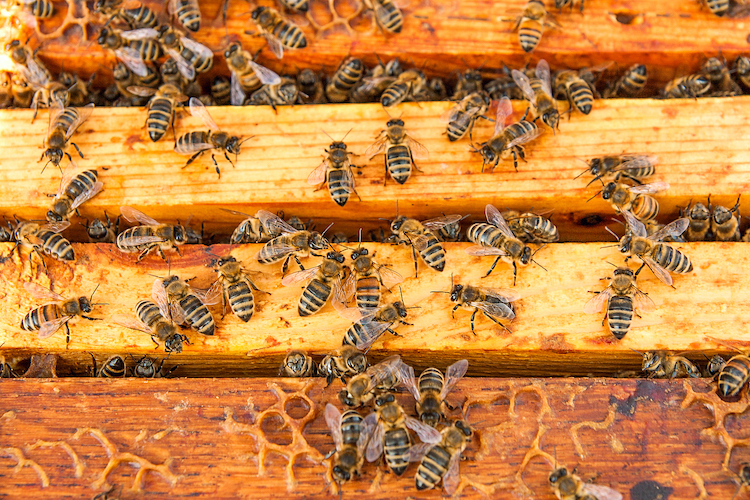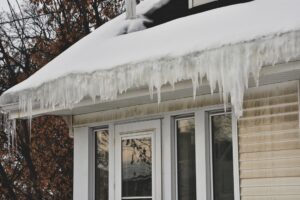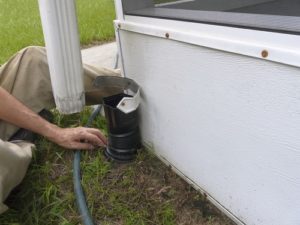
They’re black and yellow, solid black, or even red and they sting – we’re talking about bees, hornets, yellow jackets, and wasps of course. No one wants to find themselves near a hive or have an angry wasp sting them. Unfortunately, summertime is the prime time for wasps to populate and feed on nectar and pollen. They’re crucial for our ecosystem, however, they pack a mean sting when provoked or protecting their hive, comb, or nest.
Hives and combs are essential for bees and wasps to survive. Depending on the type of bee or wasp, a hive or comb is used to keep nectar, pollen, eggs, and even larvae safe from predators and the elements. They build these hives and combs wherever they feel they’ll be protected. That means our homes, gutters, and even our attics could be the home to thousands of wasps, bees, yellowjackets, and others.
Dealing with hives and combs is a nuisance and can be dangerous. Continue reading as we share how to deal with bees and wasps outside your home so you can be as safe as possible.
Safety First
You should first consider your safety when dealing with bees and wasps, especially if you’re allergic. While most people can tolerate a sting and will have a sore spot with a minor bump or welt, those who are allergic can have a severe reaction to a sting. If you’re allergic, ask a friend or family member who isn’t allergic to treat and remove the hive or comb or hire a professional.
Bees and wasps are most active during the daytime, spending their days collecting pollen and nectar. They swarm for hours during the warm spring, summer, and even warm fall days here in and around Centennial, Colorado Springs, and Denver. For the safest course of action, start the removal process in the early morning or late evening hours when bees and wasps are sleeping in the hive or comb. This way you’ll avoid bees and wasps coming and going to and from the hive or comb.
Also, be sure to dress appropriately. When spraying insecticides or any homemade natural sprays, you’ll want to protect yourself from possible bee and wasp stings. While most of the bees will be sleeping in the early morning and late evening hours, there is a possibility for some to wake up and become protective if they feel threatened. Cover as much skin as possible with long sleeves, pants, glasses, close-toed shoes, and a hat. Less skin exposure means there is less of a chance for bees and wasps to sting.
Apply Wasp Removal Sprays
Once you locate the hive or comb, the next step is spraying it for safe removal. While you can DIY a wasp or bee spray with natural ingredients, they’re more for prevention, not for hive or comb removal. Insecticides have ingredients that are proven to work to kill the bees and wasps inside of the hive or comb. They can be found in nearly every garden and big box store.
As previously mentioned, apply the insecticide when the bees and wasps are inactive. Dress accordingly and spray the hive or comb in the early morning or late evening hours. You’ll want to spray directly in the main entry hole (a large hole that’s easy to identify once you see the hive or comb). After spraying, you’ll need to remove the nest or hive. It’s crucial to wait until you don’t see any bees or wasps leaving or entering the hive or comb, so give the insecticide a day or two to sit before you remove the hive or comb.
Keep Bushes & Trees Trimmed
A preventative measure you can take to keep bees and wasps away is to keep bushes and trees trimmed. Some bees and wasps love to build their hives and combs on tall structures like our homes. If you have flowering bushes and trees that surround your home or are directly under your gutters and downspouts, bees and wasps will be attracted to that location and will most likely build a hive or comb against your home or inside open-top gutters since food sources are readily available. To help deter bees and wasps, keep bushes and trees trimmed, not allowing them to be overgrown to attract bees and wasps.
Clean The Gutters
Bees, wasps, and hornets love to build their hives and combs in and around a home’s gutter system. It’s high above the ground so predators are out of reach, there is a food source nearby, and they prefer damp areas. Clogged or unclean gutters provide bees, wasps, and hornets with the moisture they crave and easy access to feed on other insects that call the gutter system home.
If you have an open-top or half-round gutter system, you’ll want to keep it clean year-round to avoid having a colony of angry bees or wasps building a hive in and around your gutters. Half-round gutter systems become dirty and clog quickly since the inside of the gutter is completely exposed, so cleaning it often is crucial not only to keep bees and wasps away but for the health of your gutter system and home.
Dealing with wasps can be a nightmare, however, taking preventative measures to keep them away is a great way to protect your family. One of the best ways to make sure wasps never build hives or combs inside of your gutter system is to install the K-Guard Leaf Free Gutter System. Our complete gutter system eliminates the possibility of becoming clogged from pesky wasps, bees, and hornets building hives or combs because of the design of our curved hood. Our curved hood has a narrow opening that only water adheres to and enters the gutter system. There is nowhere for debris, leaves, pests, and wasps to enter the system.
Contact our team today to learn more about the K-Guard System or call (970) 432-8093. K-Guard is the premiere gutter company in Colorado, providing a leaf-free gutter solution for homeowners for many years. We proudly install the K-Guard Gutter System across the state of Colorado including, but not limited to, the following locations: Denver, Colorado Springs, Littleton, Centennial, Aurora, Boulder, Castle Rock, Broomfield, Fort Collins and so much more! Schedule your free estimate today.



